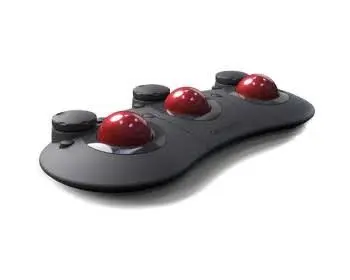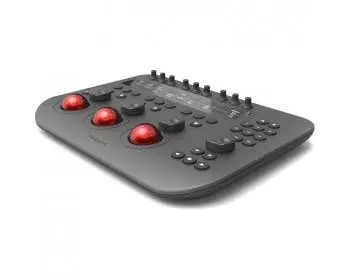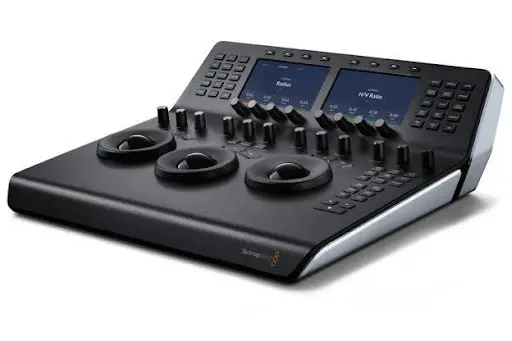In the captivating world of cinema, where every detail matters, Color Live is a crucial element that can make the difference between a good film and an extraordinary one.
But what exactly does Color Live mean, and how is it used on film sets?
In this article, we'll explain what Color Live is, describe what Colorists and DITs do on a film set, and introduce all the necessary tools to professionally enhance the color of your images On/Off Set.
1. What is Color Live
Color Live is a process that allows for managing and modifying colors in real-time during shooting or in post-production.
This enables DITs (Digital Imaging Technicians) to make color corrections on set, ensuring that the image captured by the camera matches the Look chosen by the director and interpreted by the DOP (Director of Photography).
Then, the Colorist interprets, according to their sensibility, the decided look by intervening in post-production.
1.1 Difference between Color Correction and Color Grading
Color Correction is the first part of the work: the color is corrected overall so that everything appears more balanced. Almost always, it's necessary to work on contrasts, increase or decrease saturation, and balance lights and shadows.
If the intervention is applied to the entire image, we talk about primary Color Correction; if instead, it works on a part of the image, we define it as secondary Color Correction. Subsequently, during the post-production phase, the Colorist performs Color Grading, considered a true art form.
Thanks to Color Grading, it will be possible to evoke moods, set the scene in a immediately recognizable time of day, and suggest an atmosphere.
2. Tools Needed for Color Live
Both during live shooting and in post-production, color management is a key element that requires the use of specific tools. Choosing the right tools and applying them correctly can make a difference in the final result of your video project.
2.1 Best Software for Color Live
Grading Software is essential for Color Live. It allows for color correction on HD, 2k, 4k signals, exposure control, defining a Look, and exporting post-production LUTs. Let's see two of the most used software at Colorshape:
- POMFORT LIVE GRADE PRO: it's the industry standard software for live color grading that integrates and controls digital imaging processes on set, allowing the visualization and sharing of the director of photography and director's artistic intent. It allows obtaining high-quality images from every scene, giving the DOP the possibility to immediately control the image. It enables you to prepare your Looks directly during shooting and make them immediately available for the automated process of creating Dailies.
- POMFORT LIVE GRADE STUDIO: It's an advanced digital imaging system, ideal for high-level film productions, integrating all components of technical monitoring and creative representation on the set. It allows creative professionals to interact with and modify the camera image in real-time during shooting, enabling them to promptly respond to changes by the Director of Photography on set with a set of flexible tools optimized for multi-camera configurations. It's the only digital imaging software equipped with classification modes for all standard industry color pipelines, ensuring a consistent color workflow from the set to the finished work.
2.2 Device: Look Up Table
To achieve effective Color Grading in video editing programs, professionals often use LUTs, files with instructions to transform colors according to well-defined schemes.
LUT stands for look-up table and represents a set of mathematical information used to modify RGB values, thereby intervening on the hue, saturation, and brightness of the video.
LUTs are distinguished into technical, also known as normalizing, and creative: the former are used to transform the log image into another color space (e.g., REC.709), adding contrast and saturation; the latter apply various modifications to different color levels to achieve a specific artistic effect.
It's essential to remember to apply LUTs only after completing Color Correction; indeed, if the shots haven't been aligned in terms of exposure and color correction, the LUTs may not meet your expectations.
2.3 Panels: Colorshape's Models
The panel for Color Live allows Colorists to adjust colors precisely, offering manual control over brightness, contrast, saturation, and other parameters. We at Colorshape recommend these models:

- TANGENT RIPPLE: With an extremely portable design, it comes with three trackballs, each controlling one of DaVinci Resolve's Three-Way Color Wheels. The quadrants above them control the corresponding luminance slider of each wheel.

- TANGENT WAVE: Its three high-resolution trackballs and nine control knobs are all equipped with non-contact optical pickups for responsiveness and durability. A wide LED panel displays the commands of the Wave's knobs and buttons in easily readable white characters.

- BLACKMAGIC MINI PANEL: It comes with two 5-inch LCD panels just above the main rings. Below the LCDs and above the row of 12 knobs are eight additional knobs that interact with the LCDs. Above the LCDs are eight soft buttons and a series of buttons to help you navigate the node tree and switch between different modes, such as qualifications and tracking. It's the most semi-portable version resembling a professional-grade hardware panel for color correction.
3. Color Live On Set Service
Digital cinematography has made it possible (and in some cases necessary) to start post-production activities directly on set.
In pre-production, a lot of time and effort are spent preparing the "look" of the production, such as collecting reference material and creating mood boards. The result of this preparation (show look) is used as a starting point and guideline for the thousands of small decisions made during actual production.
This is why it's essential to have someone on the field who can monitor the consistency of the images according to the Look previously chosen by the DOP. This makes it easier to judge how changes, such as in lighting or exposure, affect the contrast of the resulting image under a chosen LUT.
In cases where the Show Look hasn't been prepared beforehand, doing a "live grade" on set allows you to create a look based on the current scene, gradually changing the shooting style following the DOP's instructions. It's important to keep in mind that within the same production, different camera models and lenses may be used. Additionally, the context of the scene (e.g., different lighting, framing, or simply changing the focal length) is an influencing factor on the image's rendering.
Therefore, Color Live On Set is the best solution to maintain a consistent image appearance within a production. Finally, for a Colorist, the look metadata can provide a starting point for final color correction and a useful reference for understanding the original intent of the DOP on set.
Thus, they improve the overall quality and consistency in post-production. We at Colorshape offer a tailored Color Live service for your film production: cutting-edge materials, experienced DITs, and years of on-set experience. Don't hesitate to contact us at info@colorshape.it for personalized advice. Discover all our rental products and services on our website.
COLOR LIVE